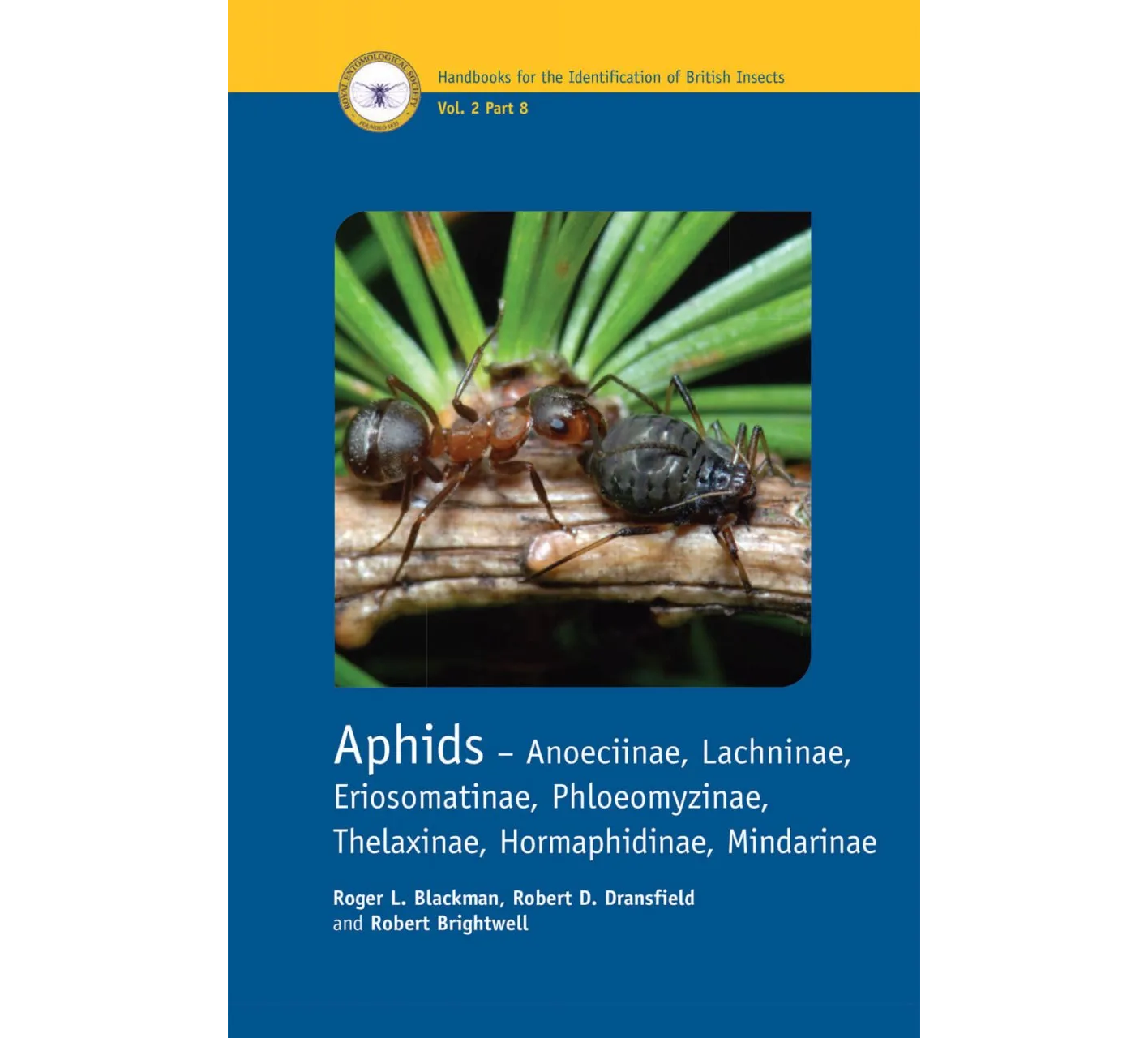| Series | RES Handbooks for the Identification of British Insects |
| Authors | Roger L. Blackman, Robert D. Dransfield & Robert Brightwell |
| Language | English |
| ISBN | 9781910159040 |
| Publisher | Field Studies Council Publications |
| Pages | 215 |
| Format | Paperback |
| Images | Colour images and line drawings |
| Year published | 2019 |
The Aphids 2 RES Handbook completes the coverage of the British species.
This volume covers seven subfamilies (Anoeciinae, Lachninae, Eriosomatinae, Phloeomyzinae, Thelaxinae, Hormaphidinae and Mindarinae), represented in Britain by 105 species in 35 genera.
The aphids in this Handbook encompass a great diversity of life-styles, but mostly occur either on trees or on plant roots. They range from the Eulachnini and other major pests of conifers, to the Eriosomatini and Pemphigini, which induce galls on elms and poplars and then migrate to colonise the roots of various herbaceous plants. Ants attend the majority of these aphids, so the activity of ants is often a useful indicator of their presence.
For each subfamily there are keys for the identification of tribes, genera and species. There are separate keys for apterous and alate viviparae when necessary. Where possible other morphs such as fundatrices, oviparae and males are also keyed. Throughout the authors have tried to use distinguishing characters that are amenable to the non-specialist.
The authors describe techniques for collecting, rearing and studying aphids and preparing microscope slides. There is advice on aphid macro-photography, which is increasingly within the reach of the non-specialist. Finally there is a glossary of terms in the specialist literature.
Although aphid identification may seem daunting, it helps that many species are host specific. The Lachninae include many relatively large insects with specific (or at least generic) host plant associations. Since the majority of them feed on conifers, this volume includes a field key. There is also a field key to the aphids, most of them in subfamily Eriosomatinae, which colonise the roots of plants.

































